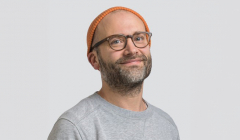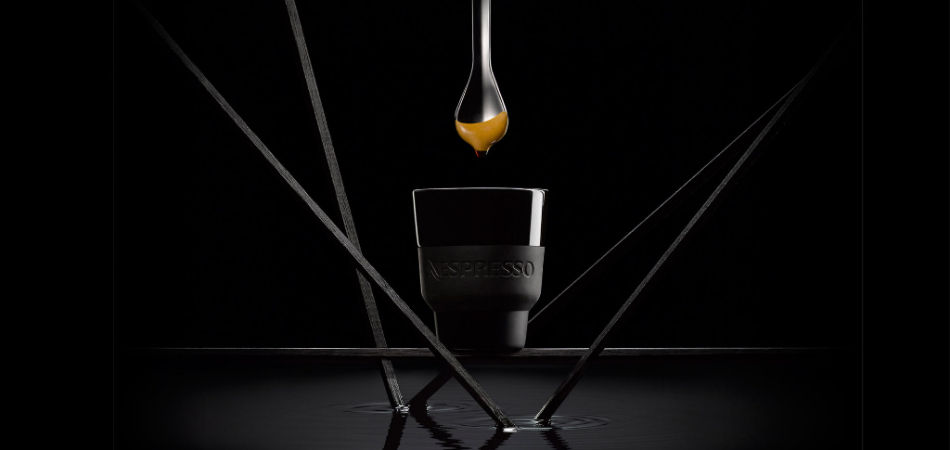
We can't be scared to take risks in 2025 – but it’s a team effort
Jeff Bowerman shares how he is embracing a ‘thrive in 2025’ mentality.
In the future, will more brands successfully translate in the US? The big question isn’t just about how relevant your branding or pack design is, but rather it's about how compelling the overall brand experience is in an ever more competitive world.


A recent article by the BBC ‘Recipe for success - how UK food firms can crack the US’ talked about how some brands can make it big in the USA while others fail. It's an age-old question. The article featured the snack brand Graze, which started out delivering healthy snacks to the desks of hungry workers, but has now gained listing in all the major UK retailers. It’s a brand that’s grown phenomenally on its home turf and like many, had aspirations to crack the notoriously tricky US market. Their original plan in the US was to launch their entire British range. But there were some things Americans loved and some they absolutely loathed.
There are similar brands with similar stories to tell, namely meat-free Quorn, Pukka Herbs and BrewDog to name a few. But it’s not just the smaller, novel businesses that need to think about local relevance and how to adapt abroad. It’s a big consideration for the global players too. In the past few decades, big brand owners have pushed for global consistency and economies of scale, understandably so given the economic climate, but often to the detriment of local nuance and tastes.
Key trends towards personalisation, locally sourced and experience over possession point towards more of a fix and flex approach, rather than one size fits all. Knowing what assets should be constant and what parts of the brand can adapt and morph is vital to future success in a more agile world. Giants like Tesco didn’t translate well in China, Thailand, South Korea and Malaysia. Namely because they dropped their global model into a very different cultural environment, where habits, perceptions of food and retailing were at a different stage to that which Tesco knew elsewhere. The result was that they made a huge U-turn.
Even car maker MINI had to work hard to show the relevance of their metal to the USA, who we know have a penchant for larger vehicles. Big Super Bowl commercials, playing up the personalisation and introducing events such as Mini Takes The States, a rally for MINI owners, have all helped create a role for the brand overseas.
In the future, will more brands successfully translate in the US? Maybe, but according to KPMG, UK brands continue to lag significantly behind their US counterparts on brand experience. The big question isn’t just about how relevant your branding or pack design is, but rather it's about how compelling the overall brand experience is in an ever more competitive world.

Nespresso has grown significantly in the UK and Europe over the past fifteen years. The UK coffee market and our connoisseurship towards coffee is now on a par with our continental counterparts, with 80% of people visiting coffee shops at least once a week. Interestingly for brands like Nespresso, according to Mintel over half of coffee drinkers prefer to drink hot drinks at home rather than out-of-home, providing a big opportunity for brands offering an at-home experience.
Many assume that because the brand had George Clooney as it’s poster boy, Nespresso came from the USA first, not Europe. Not so. Mintel predicts that US consumers will spend around $5.3 billion on coffee capsules in 2018, making it a huge opportunity for the brand. But when it did come to launching the Nespresso model in the USA, a considerable time after its European success, it wasn’t a simple job of cut and paste. Firstly, the coffee culture was very different across the Atlantic. In Europe, we’re used to our short coffees – espresso shots, macchiatos or flat whites. In the USA it’s about longer, more milky coffees – not as strong and intense.
For Nespresso, this meant introducing a whole new pod system and new type of machine that caters to these tastes. As a result, the brand introduced Vertuo – a new, larger size of pod specifically designed for long cup coffee, delivering the style of coffee loved by the American market.
Looking at the consumer journey, another key insight was around the daily drinking habits and nuances of American coffee consumption. The ritual of grabbing a Starbucks on the way to work meant that making a Nespresso in the morning at home wasn’t top of mind. To counter this, a range of specifically designed breakfast blends were introduced, with the creative idea of integrating Nespresso into your morning regime.
The USA launch shows that the brand knows what assets to fix from a global point of view and what elements can flex by market. In the case of the USA, the brand takes on a lighter and more relaxed design aesthetic, different from the darker and moodier tones used in Europe.
The future success of the brand does rely on the overall experience. Over 50% of our new Nespresso Club members experience Nespresso for the first time through friends and family, showing us that relevance and consumer connection at a local market level really is the key to success.



Some brands manage to expand globally with little or no change to their core DNA or design aesthetic. Take Sleek MakeUP, a cosmetics brand that grew quickly on the UK high street as a real challenger. The brand now has a global footprint, with strong sales in the USA, among other markets. The brand uses the same campaign and visual identity globally, perhaps because it’s talking to the same young, experimental Gen Z individuals who know no borders and come together on the likes of Twitter, Instagram and Snapchat to exchange makeup tips and learn from one another, regardless of location.
Jovan joined FutureBrand in 2015 and leads consumer branding and innovation. During his career he has worked with Unilever, Britvic, Diageo, Penhaligon's, AB InBev, Next, P&G, SAB Miller and Mondelez. His experience in the luxury sector helped win numerous design awards including DBA Design Effectiveness, New York Festivals and a Marketing Week Award. Jovan is passionate about sound strategy, best-in-class creativity and above all, creating an emotional connection with the end consumer for commercial success.
Looks like you need to create a Creativebrief account to perform this action.
Create account Sign inLooks like you need to create a Creativebrief account to perform this action.
Create account Sign in